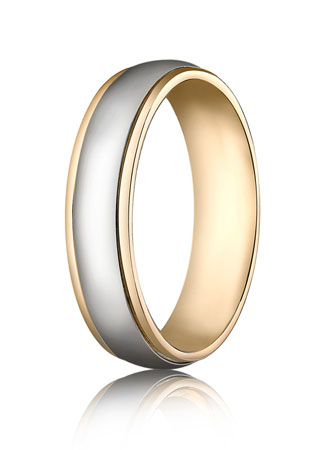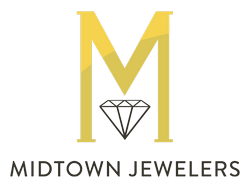
Jewelry has always been made with precious metals — in fact, part of what makes them precious is that we find them beautiful and want to use them as adornment. But have you ever really thought about what precious metals? Here’s a primer for you.
Yellow Gold
Gold seems to have been almost universally valued since ancient times. It’s practically unique among metals in that it does not tarnish, rust or discolor in any way. This was a marvel to ancient peoples, and probably contributed to the high status of the metal. After all, a metal that didn’t rust seemed somehow more perfect than anything else.
Gold is too soft to be used in most of the places where metal is used, like machinery or tools. In fact, when pure, it’s too soft for most jewelry applications, which is why it’s mixed down (or alloyed) with other metals. 14 karat gold, for instance, is 14 parts gold to 10 parts alloy. 18 karat gold is 18 parts gold to 6 parts alloy.
Many types of metal can be alloyed with gold. When copper is alloyed with it, it creates rose gold. Nickel, silver, manganese or palladium help make white gold. There are many other potential alloys out there, but those are the most common.
White Gold
As we mentioned above, white gold is created by mixing whitish metals in with the gold to “bleach” it. Silver is perhaps the most common alloy for white gold. As you’ve learned, 18 karat gold is 18 parts gold and 6 parts alloy. But what happens if the alloys are not enough to make gold look white? In that case, a shiny, lustrous white metal like rhodium is used to plate over the gold.
Platinum
Platinum is a less well-known metal, in part because it was discovered only three hundred years ago, and in part because it is very rare. Platinum is thought to have been deposited by meteorite collisions, and so is most commonly found in areas that are known to have experienced impacts.
Not only is platinum comparatively rare, it is also in great demand in the technology world, where its inertness, its resistance to very high temperatures, and its corrosion resistance makes it highly prized. All that and it’s very pretty, too! However it does contribute to its expense.
Because platinum is so unreactive, it is very hypoallergenic, which makes it good for people with metal sensitivities. Platinum is 95% pure, and because it’s so hard, it doesn’t need to be mixed with lesser metals like gold does in order to make durable jewelry. Some people have switched from gold to platinum to avoid having to worry about nickel being mixed in.
